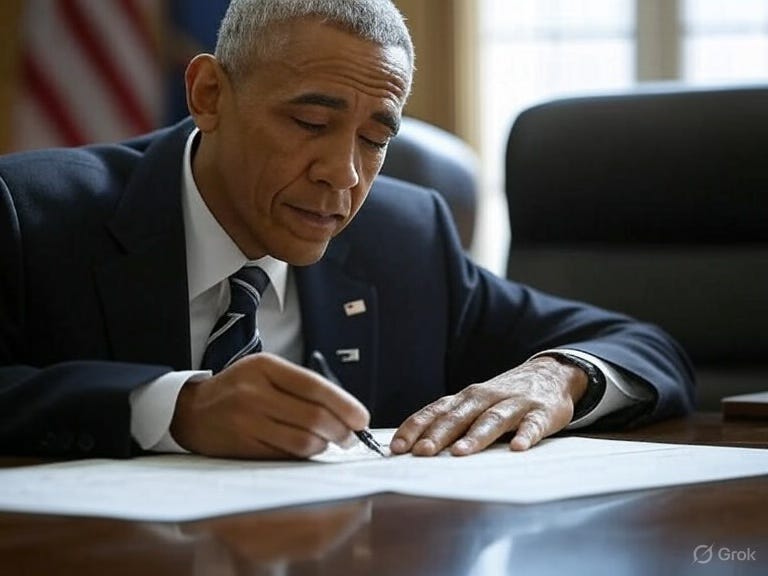How Obama Kicked Off a Cultural Revolution in the CIA and FBI
Few dissented. Almost the entire intelligence establishment went along.
Be sure to read yesterday’s Deep Dive on the Court’s ban on nationwide injunctions. Normally these are for our Premium Members only, but we’ve made this one FREE.
NOTE: My friend J. Michael Waller serves as Senior Analyst for Strategy at the Center for Security Policy. This article is excerpted from Mike’s book, Big Intel: How the CIA and FBI Went from Cold War Heroes to Deep State Villains. I strongly urge you to read it. — RDM
by J. Michael Waller
July 2, 2025
The cultural revolution in the intelligence community, as with much of the rest of the government bureaucracy, began on August 18, 2011. On that day Obama issued Executive Order 13583. The title said it all: “Establishing a Coordinated Government-Wide Initiative to Promote Diversity and Inclusion in the Federal Workforce.” The shepherdess of the executive order was presidential confidant Valerie Jarrett.
Diversity order 13583 was a social revolutionary ukase. It made no reference to enhancing intelligence collection, analysis, operations, or capabilities. It gave no explanation as to how such a diverse force might strengthen the intelligence community with language skills or knowledge of domestic or foreign cultures or the benefits of varied personal perspectives, experiences and backgrounds.
On its face, 13583 looked like a virtue-signaling sop to the various identity groups that funded or mobilized voters for Obama’s presidency. But there was nothing superficial about it. It was an ideological coup. The executive order was a majoritarian decree to transform the culture of the entire federal bureaucracy through implementation of critical theory. Once the bureaucratic culture changed — as Gramsci and Marcuse had taught — the proper opinions and policies would follow. Obama knew that personnel is policy.
The Obama White House barely pretended to draw a correlation between increased diversity in the intelligence community and the upgrading of American intelligence capabilities. It issued no guidance on the actual skill sets that a more diverse workforce would require. The criteria kept shifting. First it was diversity and inclusion, later “equity” would be inserted between the two. Persons with disabilities, known as PWDs, became “persons with targeted disabilities,” or PWTDs, “targeted” meaning more severe – to include advancement for people with psychological disorders and mental illness.
Agency meetings advertised as inviting open exchanges of ideas fizzled into presentations that mandated policies and stifled discussion and constructive feedback. All personnel were invited to voice concerns, but it was clear that any intelligence professional who did so risked paying a price. One might mark oneself for professional oblivion by dissenting at all.







